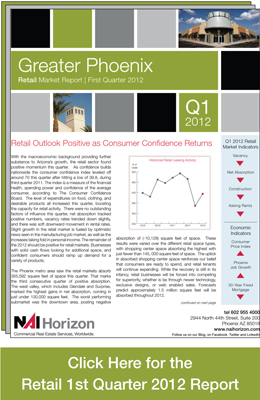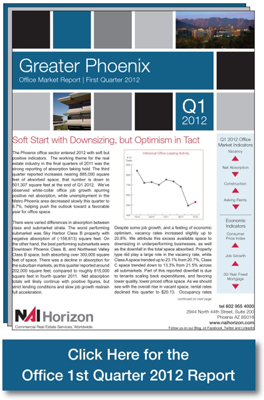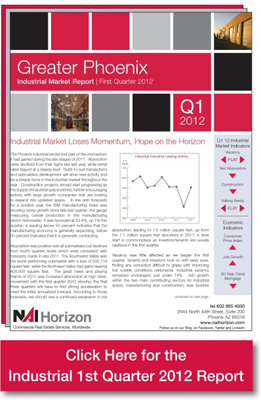Altogether mixed signals of growth and decline make for a tough look at the overall prognosis of our economy. Middle Eastern woes, muddled relations between Iran, Israel and the US are providing for vast escalations in oil prices, which in turn drive up consumer prices on all ends. Globally, the Middle East is only one aspect of the problems we must cross. The sovereign debt crisis continues to be a murky issue, one that must be sorted out, to gain worldwide economic growth. Practical negotiations are taking shape, which could induce calm in the most troubled regions.
Although returns in the real estate market were up to 14.5% for 2011, investors and businesses alike may be hesitant to make any large decisions until the elections are over. The huge sign of 2012 will be the adoption and election of beneficial policy implementations that encourage stability and foster growth. Right now, it’s unclear if the federal reserve will continue to keep borrowing costs at low rates with the economy generating growth. If rates increase, confidence will be enhanced and investment activity will increase across all asset classes.
Unemployment nationwide is finding lower levels from the highs reached during the peak of the recession. Arizona has experienced measurable increases in employment. Manufacturing added gains in job growth, while construction jobs also saw a YTD increase (up 2.4%). Consumer spending increased during the first quarter, yet it was met with rapidly increasing prices.
Manufacturing nationwide has been one of the largest growth factors improving for 34 consecutive months according to ISM.
Arizona has seen overall cap rates trending up to approximately 8.65% which may be due to the excess Class B and Class C property supply, yet reported by Cole Capital, risk and return valuations favor the commercial real estate industry. The 30 year fixed mortgage rate has ticked down since late 2011, a positive factor as our residential housing market has begun to experience a significant increase in sale velocity. For prices to return to pre-recession levels, we need to see significant increases in employment, businesses confidence, and more optimism in the minds of credit lenders. Investors will flock to the real estate markets for steady.



